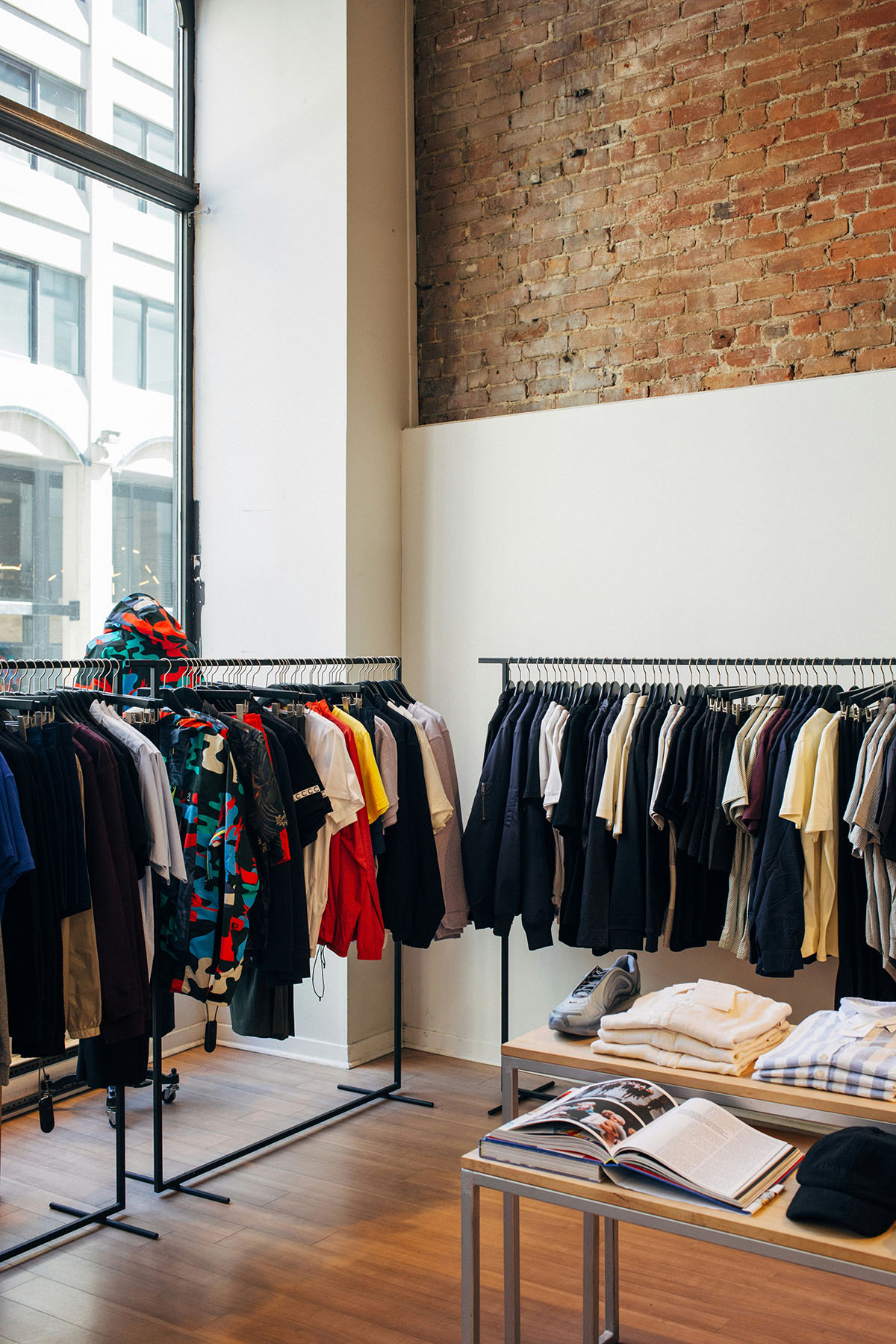I am fascinated with processes. Not just business processes, but processes in general. As an engineer, and a one working in “AI” I have learned to consider the various perspectives of a phenomenon.
I admit fashion was not my forte, and I’m still early in this show, but Vessie, who has been designing and selling clothes for more than a decade, agrees with me – the fashion brands have shrugged their shoulders in despair and just accepted their faith. They seem to think the sizing issue is insolvable.
True, some small and medium brands are still trying various solutions, but it seems the big ones have just given up. Their strategy, at reducing costs on returns, has been not reducing the returns, but rather optimizing the returns logistics.
Let’s start from the beginning
Why the returns problem even exists? Or rather, why has it become such a big problem for apparel retailers? Because it is not something that just suddenly happened yesterday – there have always been returns, it just didn’t used to be widespread and so easy to do. Obviously, before the e-commerce was a thing returns were also rare, because it meant someone buying a product off the store without trying it out in place, hoping it will fit, and then later – at home, seeing that is not the case. That was obviously a rare thing to happen in general. And then, a person in such situation was challenged with a decision – should they even attempt to return it, do they even know what the store’s return policy is, and then they should have to physically go to the store to do so, and so on. So yeah – it was rare.
But then e-commerce started picking up the pace. Now apparel retailers were trying to come up with ways to attract shoppers, and most of all – trying to reduce the perception of risk. You have to remember, at the beginning there were a lot of risks associated with online shopping, and buying the wrong size wasn’t even the worst of them. There were “stores” that were just a front for stealing bank card information – it was the wild west times of the internet shopping.
So, shops were desperate to find ways to sooth shoppers and sweeten the deal, so to speak. Brands could afford to start looking at returns as a marketing tool. They had some extra margin on those products sold online, as the e-shops are a much cheaper channel than the brick and mortar store with its rent, maintenance and staff.
So, why not offer free returns!
And so they did. More and more apparel retailers started offering their customers to take away the risk of making the wrong purchase, by allowing free returns. At first it was working great, customers obviously loved it. It wasn’t immediately a revolution, and the solution had to go through a bit of an evolution before it was convenient enough for customers to start actively using it, but here we are. What happened is what usually happens with simple solutions to complex problems, things started going in an unforeseen direction.
Before I continue, let me tell you a story about the “Perverse incentives” problem and the Cobra Effect. The legend has it that in the 1800s the British government of India was concerned about the number of venomous cobras in Delhi. They offered a bounty for every dead cobra. Initially, it was a successful strategy – large numbers of snakes were killed for the reward. Eventually, however, it became a business, a source of income – people began to breed cobras for the steady income rather than catching them in the streets. When the government became aware of this the reward program was naturally cancelled. Without the incentive the cobra breeders now had no reason to keep the snakes, so they set them free. And contrary to the goal of the program that led to an increase of the wild cobra population (Perverse incentive, 2024).
The point that the story is often used to make is that you get what you incentivize for. In other words, if you want a dead cobra, it can only come from a live cobra, so optimizing for the reward it can only lead to more cobras, not less… see the connection? If you promote free returns, you will get more returns, and in this case the causality is even direct.
Of course, I’m not discovering the hot water here. Marketeers of the day knew exactly what this direct causality will bring. They knew they will get more returns when they promote free returns, but I don’t think they anticipated the extend of the effect.
But this is not the only factor that led to where we are. And I’m not even talking about the technological enablers, such as:
There are other, to some extend external to the industry, factors that incentivized customers to use their free returns “right”. For example, one such factor is
Immediate delivery
As many apparel retailers are trying to find an edge, especially large marketplaces (with their own delivery infrastructure, such as Amazon) and big brands with closer and stronger relationship with the delivery industry, “immediate” deliveries have become a thing. We are no longer talking even about same day delivery, but rather delivery within the hour, or in some cases even within 30 minutes (in the city).
That means people can turn their home into a “store on demand” with their own private changing room. They can order a bunch of clothes, in different variations of the product (for instance, several colors or sizes), and return the unwanted ones. Or even, get a nice new garment to wear tonight (keep the label, make sure not to ruin it) and then return it on the other day. Why not do that every day, why not turn into what the industry now calls “Serial Returner”? This behavior, of preliminary knowing, or even better – having the intent to, return an order as it is being made, has become more extreme and widespread, to an extend that it has its own name now…
Get a FREE copy of our eBook
Boost Sales For Your Fashion Brand!

A must read for every fashion designer and brand owner who wants to scale their business.
Intentional returns
People are buying clothes online intent on returning them, knowing they will keep only a few, or even none of the order. You can see how the “perverse incentive” name fits perfectly here.
If we investigate the research data from the last few years, we can see that Intentional returns is the 3rd largest reason for returns. When the industry started promoting the free returns, I don’t think they accounted for all the factors that will affect their costs associated with it. Obviously, there are the legitimate reasons for a return, like size misfit or product defect, and surely some have foreseen the returns that will increase because people won’t be able to try out the clothes before buying, but the industry as a whole did not account for the scale and the volume.
Reverse logistics will save the day! Or will it?
So, here we are, looking at returns and thinking how we can reduce the cost associated with this material flow feedback loop of a sorts. Logically it has two types of solutions, depending on where you apply them. You can either aim at reducing the volume of the feedback, making sure less products “need” to be returned, or you aim at optimizing the actual cost of the return logistics of the existing volume of returned products.
One of these will be more effective, but messy and difficult, because (up to now) there wasn’t a good mass applicable technology to drive it, and because… well, because people are different, and a possible solution requires personalization. The other is better than nothing, and it lies on known methods and established practices, and doesn’t particularly care for the people.
No wonder why apparel retailers went with the known “problem” to solve. But let’s break those two approaches down and see where the industry should really be focused. And don’t get me wrong, I don’t say you shouldn’t optimize costs for return logistics – a business has to optimize for all costs, regardless of where in the chain they arise. My point is one of priorities. It is not one or the other, but rather which one first. My logic will always say focus where the bigger impact can be achieved.
Start of process vs. End of process solution
I am not claiming exhaustiveness, but if we make a simple matrix of the pros and cons of the solutions, without event diving below the surface, here is what we get:
| Reducing ordering of “wrong” products | Reducing cost of returns | |
|---|---|---|
| PROS | Reduction in forward logistics costs from the beginning: – less inventory retrieval activities; – less shipped volume; – less packaging; – less environmental footprint. Increased order volume: – more international orders* Higher customer satisfaction: – less choice anxiety. Sales and production optimization analytics: – what are customers looking for; – what you miss in your catalog. | Reduction in reverse logistics costs at the end: – mainly through returns aggregations Sales and production optimization analytics: – what are customers looking for. |
| CONS | Needs data: – customer data needs to be collected; – product data needs to be entered into the system. | Only a small portion of the product value is recovered [X]: – most products are either bellow the return logistics cost, and thus it makes no sense to be shipped back at all, but rather discarded; – of those that are eventually shipped back only some are in a condition to be sold again; – processing delays might make a returned product obsolete (out of fashion). |
* Although online stores and globalization generally, have made the online shopping a much more seamless process regardless of geo location, it is not yet without challenges. According to the UK’s e-commerce association the reasons UK citizens don’t buy from overseas sites are:
It can be seen from this that if people believed they are getting the right product, and it is unlikely they’ll have to return it, they would be much more willing to buy from foreign sites. And for a shop owner, a solution like ours means that at least one reason not to ship internationally fades away.

Leave a Reply
You must be logged in to post a comment.